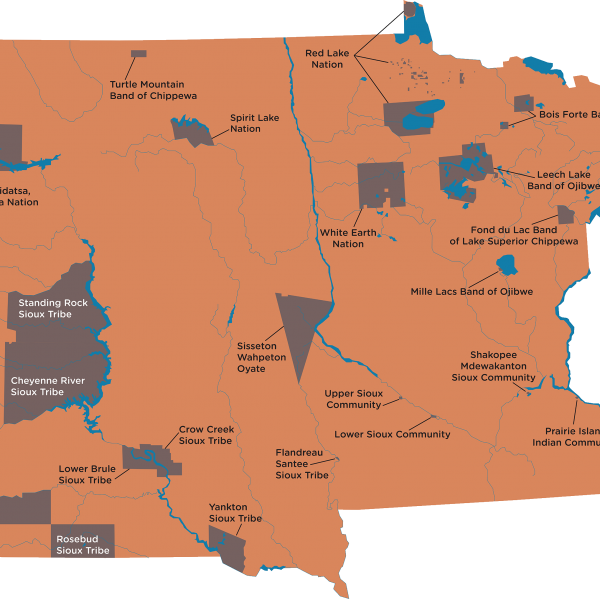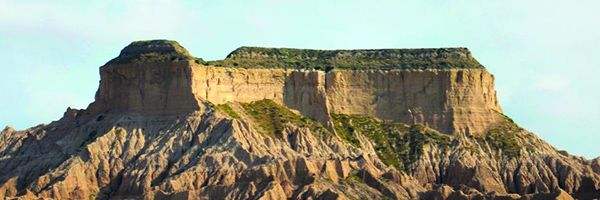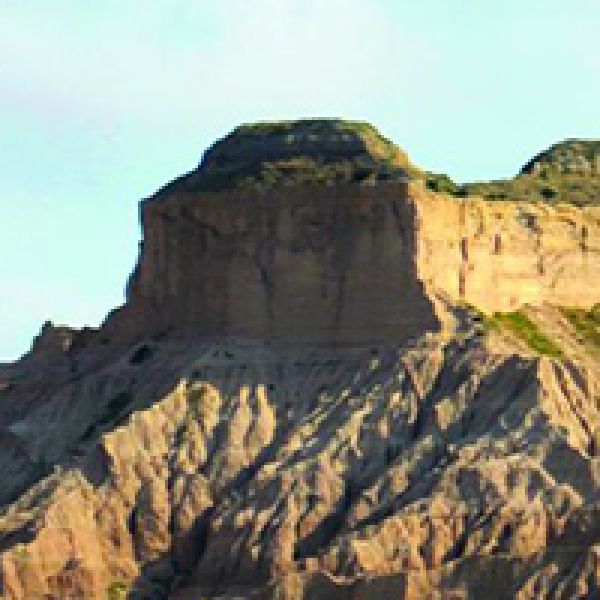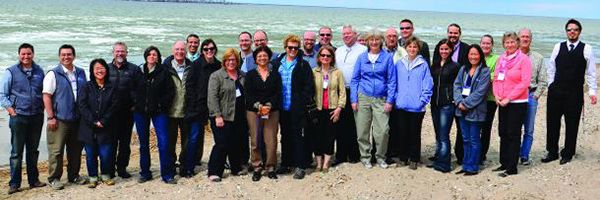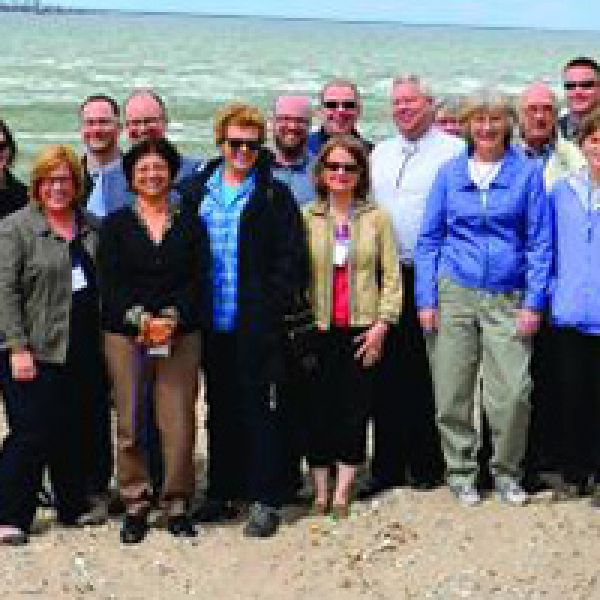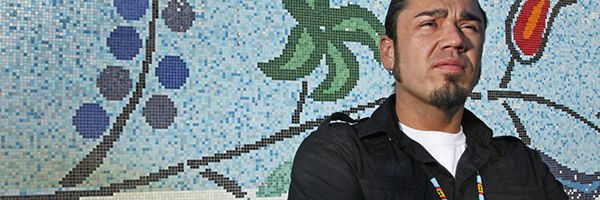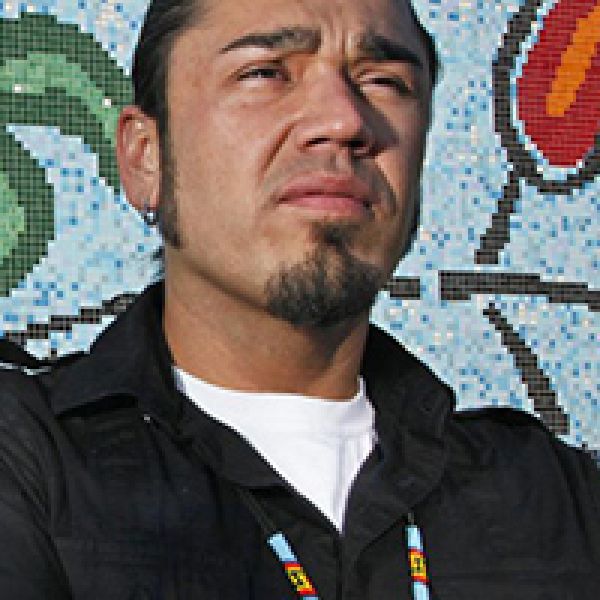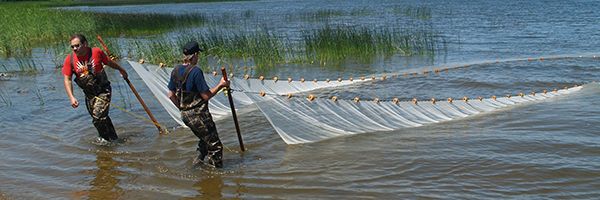Lessons Learned from the Native Nations Initiative
Published: June 2015
The Bush Foundation launched the Native Nations Initiative in 2009 to support governance reform efforts of all 23 Native nations that share geography with Minnesota, North Dakota and South Dakota. Five years into this 10-year initiative, the Foundation hired Wilder Research as an independent evaluator to assess our progress and challenges. Wilder interviewed program participants, tribal leadership and regional leaders from the field. This learning paper summarizes Wilder’s evaluation.
Background and approach
The Native Nations Initiative is based on the belief that effective governance is a fundamental factor for sustainable community and economic development in Indian Country. Funds support tribes that are engaged in redesigning governance systems—including collective decision-making, dispute resolution and tribal elections. Our move toward funding nation building was shaped around extensive research from the University of Arizona’s Native Nations Institute (NNI) for Leadership, Management and Policy; and the Harvard Project on American Indian Economic Development. NNI, based in Tucson, has been a close partner in designing, launching and delivering the initiative.
Our approach recognizes that each tribe has unique histories, assets and challenges. A “one-size-fits-all” model to creating partnerships, therefore, clearly would not work. Instead we grounded our method in respect for each Native nation’s starting point, and looked to tribal leadership to set project strategy, tempo and pace. We spent time with leaders, getting to know where their communities have been, where they wanted to go and how partnership with the Foundation could serve their work best.
We support nation building through four primary avenues:
-
SHARE THE TENETS OF NATIVE NATION BUILDING WITH TRIBAL LEADERSHIP.
-
We believe that one of the first steps to initiate deeper action for any Native nation is hosting in-person learning sessions. To date we have sponsored 27 on-site and regional sessions that feature idea-generating presentations from Foundation staff. Time is also set aside for leaders to discuss how they might implement some of these new ideas in their own nation building. Sharing case studies and best practices in this way gives tribal leadership useful tools designed to assess governing systems—and to formulate corresponding action plans.
-
- FUND WORK, DIRECTLY AND INDIRECTLY, THAT ADVANCES NATION BUILDING AGENDAS.
- We award Native Nation Rebuilding Grants that support single projects or events, such as forums to discuss economic development. Grants have also supported large, multi-year constitution reform efforts that require a core team to lead intensive community outreach. When tribes ask for technical assistance, we will contract with third parties to bring in regional experts or facilitators. This can, for example, help tribes move through difficult nation building conversations.
- CREATE ON-THE-GROUND EXPERTS WHO ADD TO THE CAPACITY AND LEADERSHIP POOL OF EACH TRIBE.
- The Native Nations Rebuilders Program is a two-year leadership development and networking opportunity. Throughout their first year, a cohort of approximately 30 Rebuilders participates in four in-person training sessions. In year two, participants use that knowledge to design and implement action plans for their communities. Since it launched in 2009, the Rebuilders program has supported more than 100 participants who represent 19 of the 23 Native nations from across the region.
- CONVENE TRIBAL LEADERSHIP TO DISCUSS AND LEARN ABOUT RISING GOVERNANCE ISSUES WITHIN INDIAN COUNTRY.
- We believe in the power of bringing people together to learn about emerging topics in Indian Country, whether it is tribal constitutional reform or issues surrounding citizenship. We sponsor gatherings where neighboring tribal citizens can meet and engage with each other to create more connections and a stronger network of Native leaders.
What worked well
Our philanthropic model. We firmly believe that the leaders of Native nations are leaders of sovereign, autonomous governments. Well before our logic model had been fully drafted, we knew that developing and maintaining reciprocal relationships with leaders in Indian Country would be fundamental to this work. In response our team hit the road to meet with tribal leadership, share the framework of our new approach and get feedback.
We also purposely designed the Native Nations Rebuilding Grants funding mechanism to be flexible. Instead of a quarterly or annual timeline, grants are awarded on a rolling basis; we set project scope and length to reflect the recipient nation’s needs. Wilder’s assessment found that grant recipients appreciate this flexibility which we, in turn, have established as a key building block to success.
Our approach resonates with tribal citizens in this region. Wilder found that nearly 86% of respondents thought nation building was “very important” or “extremely important.” Once connected to successful and effective stories of nation building, tribal citizens were motivated to help transform and strengthen their own nations.
Our legacy of support for regional leadership development. With a signature program like the Bush Fellowship, it only made sense for us to focus our leadership development efforts on tribal individuals and communities. Wilder’s interviews found universally positive views from Native Nations Rebuilders Program alumni. In fact, many have become elected leaders within their nations, citing their Rebuilders experience as a main inspiration. The trust established through the Rebuilders program allows us to tap into the knowledge of tribal leaders, which in turn makes our programs better. Rebuilders have become our advisors on strategy, program changes and the selection of new Rebuilders. One alumnus has become a member of our Board of Directors.
We set appropriate expectations. None of the nation building successes are quick, easy fixes; they require visionary leadership, continual assessment and determination—all driven by tribal citizens. We communicate this clearly and effectively because we do not want to set grand expectations of overnight success stories. When we communicate with nations about possible partnership opportunities, together we set the scope and pace of the projects to match the reality of long-term nation building.
What didn’t work well
Clarity of program goals. Being flexible and open with our approach is helpful, but Wilder found that it also results in a lack of clarity for many tribes as they consider working with us. As the Native Nations Initiative unfolded in its first several years, we wanted it to have the freedom to explore a range of projects. Our approach has been refined as we have learned lessons; we have yet to develop a clear framework of activities that we will fund.
Reaching our original goal. In 2009 we hoped that, “by 2020, all 23 Native nations will be exercising self-determination and actively rebuilding the infrastructure of nationhood.” We created a goal that was too ambitious to achieve within a decade. Because we work with nations on their own terms, this will take generations to achieve. Furthermore, we understand now that our original goal assumes we have much more control than we actually do. We have since modified our goal to note that we aim to support the rebuilding efforts of the 23 Native nations. This clarifies our intention to be a partner in the nation building process, and knows that, ultimately, it is a process that will grow or stall based on tribal citizens and their leaders.
Staff capacity is limited. Our initiative has built up a lot of demand for on-the-ground, long-term nation building support. However, Wilder’s assessment found that our team does not have adequate internal capacity to deliver on these increased demands. Regionally, the Bush Foundation is the only funder working in this specific funding arena. Meanwhile our primary partner, NNI, features a talented yet small team who is based in Arizona and works across North America.
What’s next?
Develop more local systems to deliver support. Wilder found that local, customized support is a big need in the region. As demand for nation building technical assistance increases, it becomes clear that we will need to complement financial supports with a more robust response. We are engaged in a deep design process—one that will build up regional capacity to support nations and Rebuilders as they create lasting change. We will continue this design process through most of 2015, and look forward to announcing a plan that will sustain nation building work.
Clarify our processes. We want to be clear, open and accessible about how we fund nation building work. We will refine and clarify our Native Nation Rebuilding Grants priorities and criteria. We also redesigned our website to streamline program information, clearly identify team contact information and showcase application materials.
Improve the delivery of educational sessions. Tribal leadership is introduced to our initiatives through an on-site educational session facilitated by NNI staff. Some of the feedback we received from the Wilder report suggests these presentations are “occasionally too academic or theoretical.” We are working with the NNI team to redesign our nation-building sessions to better serve adult learners and make the content more accessible.
Improve the action plan component of the Rebuilders program. The Native Nations Rebuilders Program introduces individuals to nation building strategies and connects them with others engaged in similar work. Additionally, the program leverages a participant’s passions for community development through individually-designed “action plans.” These plans have been wide ranging—from hosting a small gathering to overhauling a nation’s constitution. Wilder’s report found that many Rebuilders feel they are not supported enough during their action plan phase. In response our team has redesigned the 2015 program, including the action plan component. This will allow the cohort to stay focused as they support one another through the design and implementation of individual plans.
Summary
The Native Nations Initiative is young, and the type of transformational change we are supporting will need generations to take effect. There is little evidence within philanthropy on how to support the nation building movement. In fact, we asked Wilder to find other foundations in the United States that are doing this type of work; Wilder could not find anything that closely resembles our approach or focus.
As we continue managing the Initiative, we have already seen evidence of impact. Tribal leaders are having new conversations with their citizens, and aspects of governance across nearly half of the region’s Native nations have improved. We have carved out a new course for philanthropy working in Indian Country that is based in deep respect for sovereignty, mutual trust and focus on continuous improvement.
The Bush Foundation is grateful to Wilder for their thoughtful assessment of our work, and is committed to incorporating those insights as we strengthen our ability to fund nation-building efforts within the region. If we can make our Native Nations Initiative even better, we truly believe we can leave a lasting and positive impact in Indian Country.
The Native Nation Rebuilders Initiative is a positive and significant force for change.

